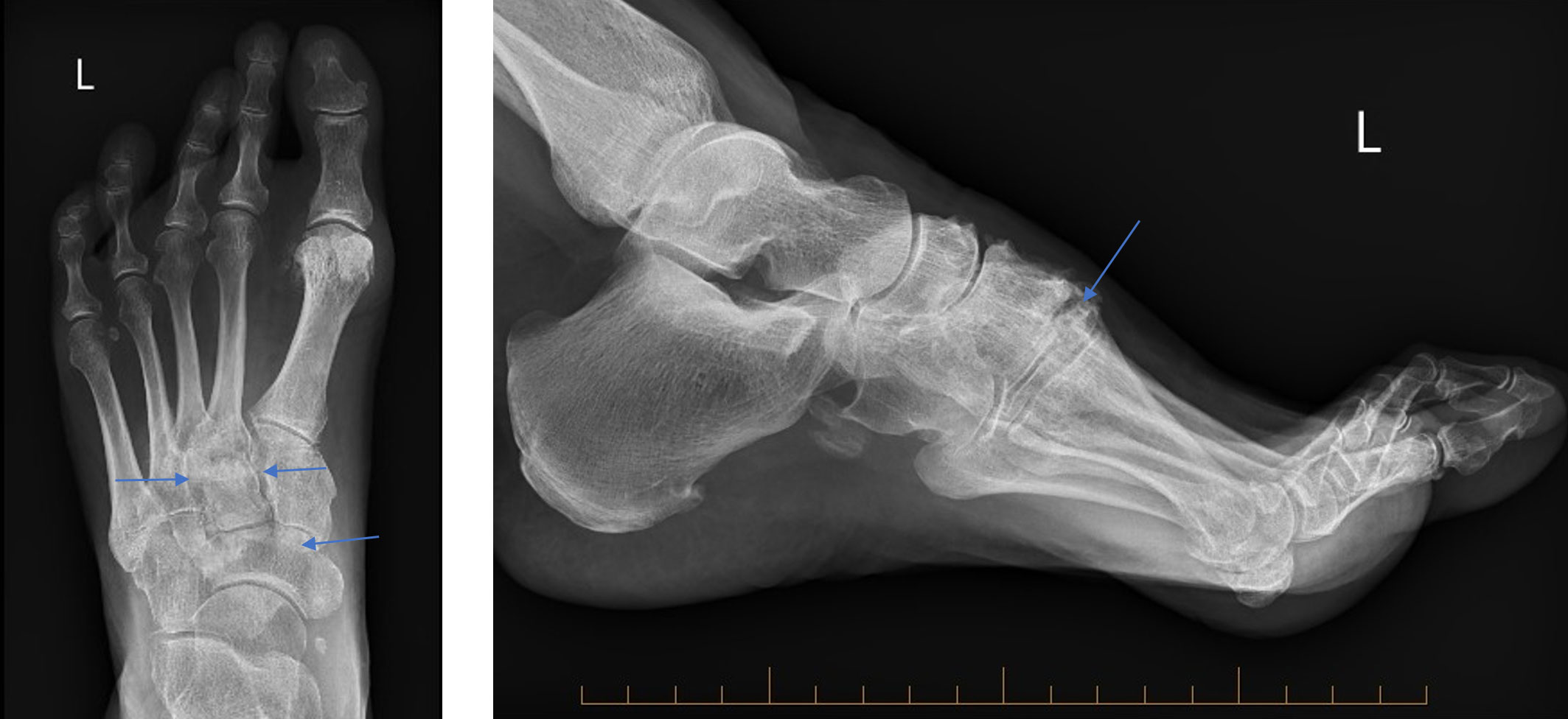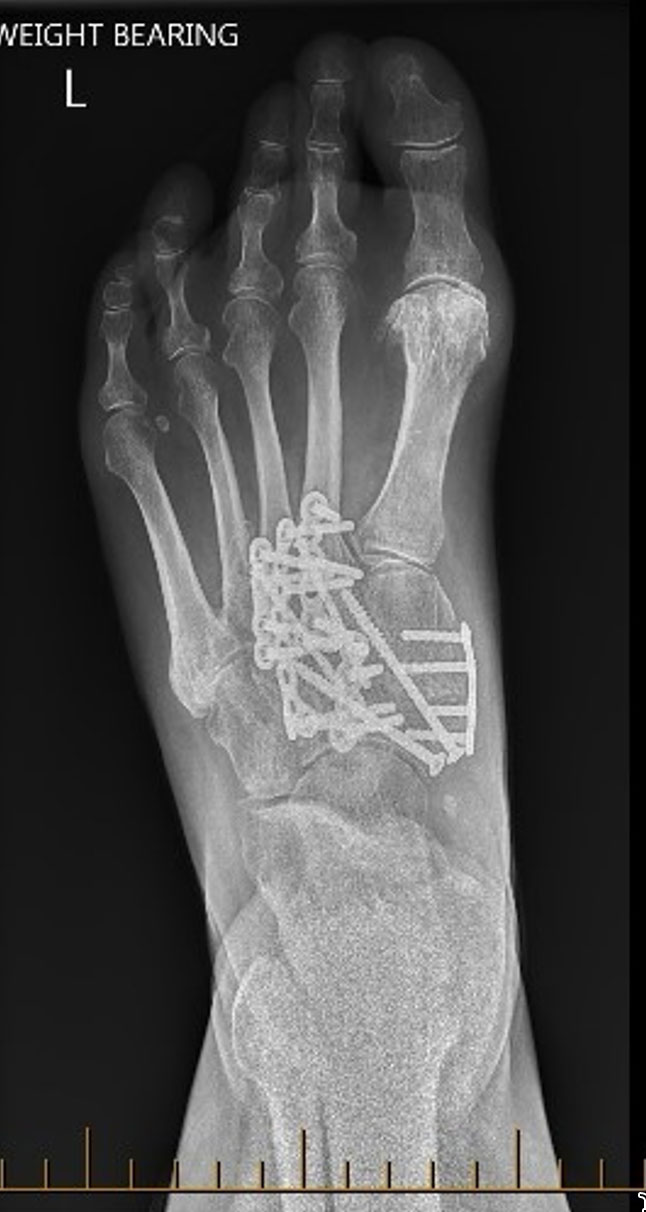When arthritis of the joints affecting the midfoot causes significant pain and disability which is not adequately addressed by non-operative measures, an operation may be required.
In the case of the midfoot, a joint replacement is not technically feasible, so a fusion operation is the treatment of choice.
In general terms, arthrodesis means to turn a joint into solid bone, so that the joint no longer exists and there can longer be movement in that location. However, the eradication of the affected joint also means the eradication of any pain associated with the arthritis, which by definition no longer exists and cannot return in this location!
The joints of the midfoot typically have very little movement associated with them, as opposed to those of the hindfoot (such as the ankle) and forefoot (such as the toes), and this is why fusion is such a good surgical option.
Arthrodesis effectively exchanges painful stiffness for painless stiffness, without any significant functional downside, as there is no accompanying loss of motion! At the same time, deformity such as a flat or high arch can be addressed.

X-rays showing a typical case of midfoot osteoarthritis, affecting multiple small joints, as indicated. These are narrow and irregular.
How is a midfoot arthrodesis performed?
The surgical approach is usually through a single longitudinal incision and dissection, protecting important intervening soft tissue structures, to allow visualisation of the medial (inner) three tarsometatarsal joints +/- the naviculocuneiform joint. Sometimes, an instep incision is also required to provide access. Typically, osteophytes (arthritic bone bumps) are removed and any remaining joint cartilage removed, in order to allow preparation of the underling bone surfaces. These are then aligned, co-apted and held securely in position with small plates and screws of either titanium or stainless steel which are shaped and sized specifically for the task. Sometimes bone graft is also required to fill bone gaps or voids, and it can be either harvested through a separate incision (autograft) or “off-the’shelf” (allograft or synthetic bone substitute).
After the operation

X-rays following healing of the midfoot fusion, with retained titanium low-profile implants that are typically not felt through the skin.
Post-operatively, a temporary, non-encircling plaster “slab” is fitted over dressings and bandaging to comfortably support the foot and prevent movement. This is removed for the first time after two weeks to allow wound sutures to be removed, before placement of either a “full” plaster or CAM Boot, depending on the circumstances, but the most important component of post-operative care is the strict non-weight-bearing for eight weeks, which is a crucial and mandatory component of this phase of the healing process, during which time bone is slowly growing across the fusion site(s).
A CT examination of the area is then completed, in order to assess progress of the fusion process prior to a return to bearing body weight on the foot. This a gradual process, initially wearing a CAM Boot and then making the transition to a roomy, firm-soled shoe, but the ultimate goal is a return to normal activities and this can take as long as total of 4 months.
As with all operations, the relative merits of a midfoot arthrodesis needs to be balanced against the relevant attendant risks and disadvantages.
If you would like advice on whether midfoot fusion surgery would be suitable in your situation, please make an appointment with Dr Newman.
FAX 02 8711 0120
drasnewman@outlook.com
NORWEST
Orthopaedic Associates
Lakeview Private Hospital
Suite 1, Level 1
17-19 Solent Circuit
Norwest NSW 2153
WAHROONGA
Suite 601, SAN Clinic
Sydney Adventist Hospital
185 Fox Valley Rd
Wahroonga NSW 2076
© 2015-2024 Dr Scott Newman | Privacy Policy | Disclaimer | Website design: WebInjection